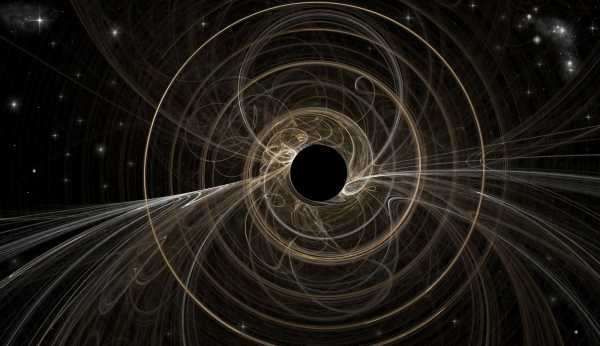
Stephen Hawking, who died Wednesday, was a hugely inspirational and influential scientist. Despite living most of his life with a serious neurodegenerative disease, ALS, that left him paralyzed, Hawking achieved a rare fame in both scientific circles and the popular imagination.
Related
Stephen Hawking’s 5 best and nerdiest pop culture cameos
Shortly after hearing the news of his death, I emailed a number of prominent physicists and astronomers to ask, “What, in your mind, is Hawking’s greatest legacy?”
Nearly everyone mentioned his popular book A Brief History of Time. But the next most common answer was the astronomical phenomenon that bears his name: Hawking radiation.
It’s the phenomenon that explains how black holes lose mass, and its discovery was his crowning scientific achievement. But like so many of the best discoveries in science, it also created more big questions about the universe and how it works.
Hawking radiation, explained as simply as possible
Hawking’s discovery started off with a simple-sounding question: Do black holes emit any heat? He had previously determined that black holes adhere to the second law of thermodynamics, which means that entropy (a measure of disorder) only increases over time. And as New Scientist explains “anything that has entropy … also has a temperature.”
In the 1970s, Hawking, using a lot of math, essentially took the temperature of a black hole.
He did this by combining insights from both Einstein’s theory of relativity (which describes how gravity works at grand scales) and quantum mechanics (which describes how the very smallest components of the universe work). These are the two major theories about how the universe works that scientists have been searching for decades to combine. And they both come into play at the event horizon of a black hole, the boundary beyond which gravity is so strong that not even light can escape.
Before Hawking’s discovery, black holes were typically thought to be objects into which things go in but never come out (the thinking actually stems in part from Hawking’s work describing singularities within black holes.)
Essentially, Hawking showed that black holes can, like so many objects in our universe, shrink and die. He even turned this insight into a bit of advice for us all: “Things can get out of a black hole. … So if you feel you are in a black hole, don’t give up — there’s a way out.”
So how does a black hole, with gravity so powerful not even light can escape, shrink?
Here’s the explanation, and it’s pretty trippy. Cliff Burgess, a physicist at McMaster University in Canada, walked me through it.
First off: Quantum mechanical theory explains that throughout the universe, particles and their counterparts, antiparticles, are constantly popping in and out of existence. Normally, when they pop into existence, they don’t last very long because a particle and its counterpart will quickly annihilate each other. (Thankfully, at the beginning of time, more matter was created than antimatter. Without that imbalance, the universe would have quickly destroyed itself.)
But life at the edge of a black hole isn’t normal. There, if these pairs of particles blip into existence, it’s possible for one side of the pair to fall in. “The one that falls into the black hole effectively has negative energy,” Burgess says, “and the other one can get out and escape from the black hole, with positive energy.”
The particle that escapes forms the Hawking radiation. And since the particle that falls in has negative energy, “you’re essentially subtracting energy from the black hole,” Burgess says. “It means you’ve taken mass away from the black hole.”
Now, no physicist has ever directly witnessed this happening (a quirk of the theory is that smaller black holes, which are harder for astronomers to find, will radiate more heat). But Hawking’s math was so convincing that just about every physicist believes this radiation exists. And that means that black holes eventually evaporate and even explode.
The finding was so important because, first off, it provided a clue that one day, quantum mechanics and general relativity could be united into one grand theory. In other words, if quantum mechanics and relativity could come together to explain what the hell is happening at the edge of a black hole, they could probably come together elsewhere.
This finding provokes yet-to-be-answered questions
But it also prompts other hugely interesting, unanswered questions about black holes. “For one, Hawking radiation seems to do things that should be impossible,” Burgess says, like delete all information about what went into the black hole.
If you fill up a black hole with solid gold, and fill up another one with pizzas, the Hawking radiation that each black hole emits will be the same. That actually breaks the laws of the universe as we know them.
Quantum mechanics states that you ought to be able to completely account for the path of any particle in the universe. So if you throw a pizza into a black hole, you should be able to trace how that pizza is torn apart; you should be able to see what happens to the individual atoms that constitute the crust, the cheese, etc. Quantum mechanics stipulates that all particles in the universe can be accounted for and information cannot be deleted.
But in a black hole, that information is lost. Hawking radiation means the black hole is losing mass. But we have no idea what that means for the pizza, which, presumably, is still inside the black hole.
It’s a scientific mystery that questions one of our most basic laws of nature. And Burgess says Hawking radiation continues to generate questions and research into the nature of gravity and how it relates to other forces.
Scientists still don’t have a great understanding of how quantum mechanics (the science of the very small) explains gravity. And Hawking, with his radiation, provided a tantalizing clue.
Sourse: vox.com






